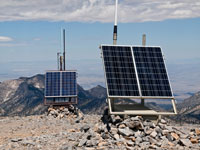| Feb 11, 2013 | |
Some 27,000 remote sensing systems based on alternative energy will be deployed annually by 2020 |
|
| (Nanowerk News) The chronic need for expanded and more stable grid infrastructure is driving strong growth in a number of markets for off-grid power. Increasingly this power is being supplied by renewable energy and alternative sources, such as fuel cells and advanced batteries. | |
 One of the most intriguing of these markets is remote sensing, including light detection and ranging (LIDAR) and supervisory control and data acquisition (SCADA) systems for the oil and gas industry, as well as remote monitoring using telemetry for environmental applications. The common factor between these markets is their need for long term, running up to a year, autonomous power supply for an off-grid, often highly remote, location Together these applications represent an overall market size in the hundreds of thousands of systems. The industry serving this market remains small and fragmented. In the oil and gas sector, demand is increasing for systems that can work in extreme conditions and very remote environments. No one solution is set to become dominant. Pike Research forecasts that, under a base scenario, nearly 27,000 remote sensing systems based on renewable and alternative energy will be shipped annually by 2020. Under a more optimistic scenario, that figure could reach just under 40,000. This Pike Research report (“Off-Grid Power for Remote Sensing Applications”) examines the market for remote sensing systems using renewable or alternative energy, focusing on remote sensing, LIDAR, and SCADA systems. Market drivers and barriers for the use of renewable or alternative energy systems are detailed, along with specific factors at work in the oil and gas industry. Market forecasts for unit shipments and for revenues, segmented by application, are provided through 2020. The report also includes profiles of key industry players. |
| Source: By Pike Research |
